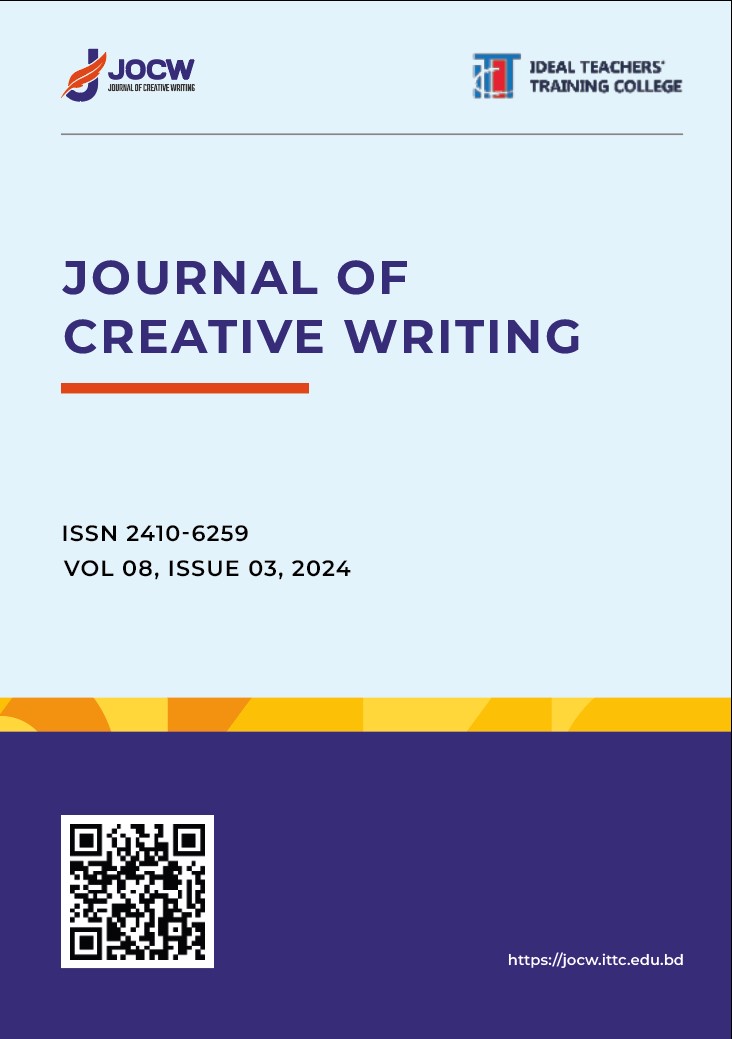How to Cite
Abstract
This paper investigates whether educational quality assurance models effectively address the quality of classroom management and school engagement. It examines practices within selected international and Bangladeshi universities, categorized by educational expense, to evaluate how quality assurance frameworks integrate indicators of classroom management and student engagement. Data were analyzed from online reports and university websites to assess the alignment of institutional policies with practical classroom strategies. The findings reveal gaps in integrating classroom-focused metrics into broader quality assurance activities, highlighting the need for frameworks that bridge institutional objectives with direct classroom practices. The originality of this study lies in its comparative analysis of diverse universities, shedding light on the role of financial capacities in shaping quality assurance initiatives. By emphasizing classroom dynamics and engagement as pivotal elements of educational excellence, this research contributes to the evolving discourse on quality assurance. The implications extend to policymakers and educators, suggesting actionable recommendations for developing comprehensive quality assurance systems that prioritize holistic student outcomes and foster innovation in classroom practices.
References
Ahmed, T., & Raza, M. (2016). Role of IQAC in improving quality in higher education institutions in Bangladesh. International Journal of Education and Development, 5(2), 43-55.
Angelo, T. A., & Cross, K. P. (1993). Classroom assessment techniques: A handbook for college teachers (2nd ed.). Jossey-Bass.
Bangabandhu Sheikh Mujibur Rahman Digital University. (n.d.). Home. Retrieved October 1, 2024, from https://bdu.ac.bd/
Bangladesh Open University. (n.d.). Home. Retrieved October 1, 2024, from http://www.bou.edu.bd/
Biggs, J., & Tang, C. (2011). Teaching for quality learning at university: What the student does (4th ed.). McGraw-Hill Education.
Biggs, J., & Tang, C. (2011). Teaching for Quality Learning at University. McGraw-Hill Education.
Bishop, J. L., & Verleger, M. A. (2013). The flipped classroom: A survey of the research. ASEE National Conference Proceedings, 30(9), 1-18.
Black, P., & Wiliam, D. (1998). Assessment and classroom learning. Assessment in Education: Principles, Policy & Practice, 5(1), 7–74.
BRAC University. (n.d.). Home. Retrieved October 1, 2024, from https://www.bracu.ac.bd/
Christenson, S. L., Reschly, A. L., & Wylie, C. (Eds.). (2012). Handbook of research on student engagement. Springer Science & Business Media.
ClassDojo Research Team. (2019). Impact of ClassDojo on classroom behavior and engagement. ClassDojo Report.
Darling-Hammond, L. (2000). Teacher quality and student achievement: A review of state policy evidence. Education Policy Analysis Archives, 8(1).
Dede, C., Song, L., & Schenker, J. (2016). Designing for deep learning in the 21st century: Innovation, differentiation, and assessment. Harvard Education Press.
Deterding, S., Dixon, D., Khaled, R., & Nacke, L. (2011). From game design elements to gamefulness: Defining “gamification”. Proceedings of the 15th International Academic MindTrek Conference: Envisioning Future Media Environments, 9-15.
Durlak, J. A., Weissberg, R. P., Dymnicki, A. B., Taylor, R. D., & Schellinger, K. B. (2011). The impact of enhancing students’ social and emotional learning: A meta-analysis of school-based universal interventions. Child Development, 82(1), 405-432.
Emmer, E. T., & Evertson, C. M. (2016). Classroom management for middle and high school teachers (10th ed.). Pearson.
Finn, J. D., & Zimmer, K. S. (2012). Student engagement: What is it? Why does it matter? In Handbook of Research on Student Engagement (pp. 97–131).
Fredricks, J. A., Blumenfeld, P. C., & Paris, A. H. (2004). School engagement: Potential of the concept, state of the evidence. Review of Educational Research, 74(1), 59–109.
Garrett, T. (2014). Effective classroom management: The essentials. Teachers College Press.
Gregory, A., Clawson, K., Davis, A., & Gerewitz, J. (2016). The promise of restorative practices to transform teacher-student relationships and achieve equity in school discipline. Journal of Educational and Psychological Consultation, 26(4), 325–353.
Guskey, T. R. (2002). Professional development and teacher change. Teachers and Teaching, 8(3), 381-391.
Hargraves, A., Earl, L., & Moore, S. (2009). Learning to change: Teaching beyond subjects and standards. Jossey-Bass.
Harvey, L., & Green, D. (1993). Defining quality. Assessment & Evaluation in Higher Education, 18(1), 9–34. https://doi.org/10.1080/0260293930180102
Hassan, A., Akter, R., & Nasrin, S. (2021). The role of IQACs in improving student engagement and learning outcomes in private universities of Bangladesh. Journal of Higher Education, 36(3), 102-120.
Hattie, J. (2009). Visible learning: A synthesis of over 800 meta-analyses relating to achievement. Routledge.
Hernandez, F., Martinez, L., & Perez, R. (2018). Adapting to the challenges of 21st-century classrooms: The need for change in quality assurance systems. International Journal of Educational Development, 60, 10-19.
Hobson, A. J., Ashby, P., Malderez, A., & Tomlinson, P. D. (2009). Mentoring beginning teachers: What we know and what we don't. Teaching and Teacher Education, 25(1), 207-216.
Johnson, D. W., Johnson, R. T., & Smith, K. A. (2000). Cooperative learning methods: A meta-analysis. Cooperative Learning, 22(2), 22–30.
Jones, A. (2018). Technology in the classroom: A double-edged sword. Educational Technology Research and Development, 66(3), 451-472.
Jones, F., & Jones, L. (2015). Tools for teaching: Discipline, instruction, motivation. Fredric H. Jones & Associates.
Kahu, E. R. (2013). Framing student engagement in higher education. Studies in Higher Education, 38(5), 758–773.
Kahu, E. R., & Nelson, K. (2018). Student engagement in the educational interface: Understanding the mechanisms of student success. Higher Education Research & Development.
Kay, R. H., LeSage, A., & Knaack, L. (2019). Exploring student and faculty perceptions of Web-based learning tools in secondary and post-secondary classrooms. Internet and Higher Education, 22, 1-8.
Khan, M. M., & Hossain, G. (2018). Internal quality assurance mechanisms in private universities of Bangladesh: Issues and challenges. Asian Journal of Education and Social Studies, 8(2), 1-10.
Larmer, J., Mergendoller, J. R., & Boss, S. (2015). Setting the standard for project-based learning: A proven approach to rigorous classroom instruction. ASCD.
López, A. R., Cerezo, P. G., & Rubio, M. A. (2020). Exploring the use of digital platforms in classroom management. Computers & Education, 150, 103858.
Marzano, R. J., & Marzano, J. S. (2003). The key to classroom management. Educational Leadership, 61(1), 6–13.
Marzano, R. J., Marzano, J. S., & Pickering, D. J. (2003). Classroom management that works: Research-based strategies for every teacher. ASCD.
Merchant, Z., Goetz, E. T., Cifuentes, L., Keeney-Kennicutt, W., & Davis, T. J. (2014). Effectiveness of virtual reality-based instruction on students' learning outcomes in K-12 and higher education: A meta-analysis. Computers & Education, 70, 29-40.
OECD. (2018). Education at a glance 2018: OECD indicators. OECD Publishing.
OECD. (2018). The future of education and skills: Education 2030. OECD Publishing.
Pianta, R. C., Hamre, B. K., & Allen, J. P. (2008). Teacher-student relationships and engagement: Conceptualizing, measuring, and improving the capacity of classroom interactions. Handbook of Research on Student Engagement, 365-386.
QS World University Rankings. (2024). QS world university rankings methodology. Retrieved from https://topuniversities.com
Rashid, M. A., & Akter, S. (2019). Challenges in implementing quality assurance in higher education: A case study of private universities in Bangladesh. Journal of Education and Practice, 10(11), 1-10.
Ryan, R. M., & Deci, E. L. (2000). Self-determination theory and the facilitation of intrinsic motivation, social development, and well-being. American Psychologist, 55(1), 68-78.
Schon, D. A. (1983). The reflective practitioner: How professionals think in action. Basic Books.
Simonsen, B., Fairbanks, S., Briesch, A., Myers, D., & Sugai, G. (2008). Evidence-based practices in classroom management: Considerations for research to practice. Education and Treatment of Children, 31(3), 351-380.
Southern University Bangladesh. (n.d.). Home. Retrieved October 1, 2024, from http://www.southern.edu.bd/
Srikanthan, G., & Dalrymple, J. (2002). Developing a holistic model for quality in higher education. Quality in Higher Education, 8(3), 215–224. https://doi.org/10.1080/1353832022000031656
Stensaker, B. (2008). Outcomes of quality assurance: A discussion of knowledge, methodology, and validity. Quality in Higher Education, 14(1), 3–13. https://doi.org/10.1080/13538320802011588
Tam, M. (2001). Measuring quality and performance in higher education. Quality in Higher Education, 7(1), 47–54. https://doi.org/10.1080/13538320120045076
The University of Melbourne. (n.d.). Home. Retrieved October 01, 2024, from https://www.unimelb.edu.au/
Times Higher Education. (2024). World university rankings methodology. Retrieved from https://timeshighereducation.com
Tomlinson, C. A. (2014). The differentiated classroom: Responding to the needs of all learners (2nd ed.). ASCD.
Trowler, V. (2010). Student engagement literature review. Higher Education Academy.
UNESCO. (2015). Education 2030: Incheon declaration and framework for action. Retrieved from https://unesco.org
United International University. (n.d.). Home. Retrieved October 1, 2024, from https://www.uiu.ac.bd/
University of Barishal. (n.d.). Home. Retrieved October 1, 2024, from http://www.bu.ac.bd/
University of Cape Town, South Africa. (n.d.). Home. Retrieved October 1, 2024, from https://www.uct.ac.za/
University of Chittagong. (n.d.). Home. Retrieved October 1, 2024, from https://cu.ac.bd/
University of Dhaka. (n.d.). Home. Retrieved October 1, 2024, from https://www.du.ac.bd/
University of Hong Kong. (n.d.). Home. Retrieved October 1, 2024, from https://www.hku.hk/
University of Malaya, Malaysia. (n.d.). Home. Retrieved October 1, 2024, from https://www.um.edu.my/
University of Melbourne, Australia. (n.d.). Home. Retrieved October 1, 2024, from https://www.unimelb.edu.au/
University of Rajshahi. (n.d.). Home. Retrieved October 1, 2024, from https://www.ru.ac.bd/
University of Western Australia. (n.d.). Home. Retrieved October 1, 2024, from https://www.uwa.edu.au/
Wang, A. I. (2015). The wear out effect of a game-based student response system. Computers & Education, 82, 217-227.
Wentzel, K. R. (1998). Social relationships and motivation in middle school: The role of parents, teachers, and peers. Journal of Educational Psychology, 90(2), 202-209.
Wong, H. K., & Wong, R. T. (2018). The classroom management book. Harry K. Wong Publications.

This work is licensed under a Creative Commons Attribution 4.0 International License.
Copyright (c) 2024 Noni Gopal Bepari, Rony Barua, Fazle Rabbi
Downloads
Most read articles by the same author(s)
- Abu Darda, Suday Kumer Ghosh, Rony Barua, MST. Fatema Khatun, Exploring Online Shopping Safety Perceptions in Developing Nations: A Literature Review , Journal Of Creative Writing (ISSN-2410-6259): Vol. 8 No. 3 (2024)
- Rony Barua, Suday Kumer Ghosh, Md Nahidur Rahman, Kartik Chandra Biswas, Md Shahin Haque, Optimizing Software Engineering Careers: Hiring, Retention, and Workforce Development , Journal Of Creative Writing (ISSN-2410-6259): Vol. 9 No. 1 (2025)
- Noni Gopal Bepari, Ashique Imam, Enhancing English Language Skills Through Fun-Focused Teaching: An Action Research in Bangladeshi Classrooms , Journal Of Creative Writing (ISSN-2410-6259): Vol. 9 No. 1 (2025)

 https://doi.org/10.70771/jocw.128
https://doi.org/10.70771/jocw.128







 Create or Connect your ORCID iD
Create or Connect your ORCID iD